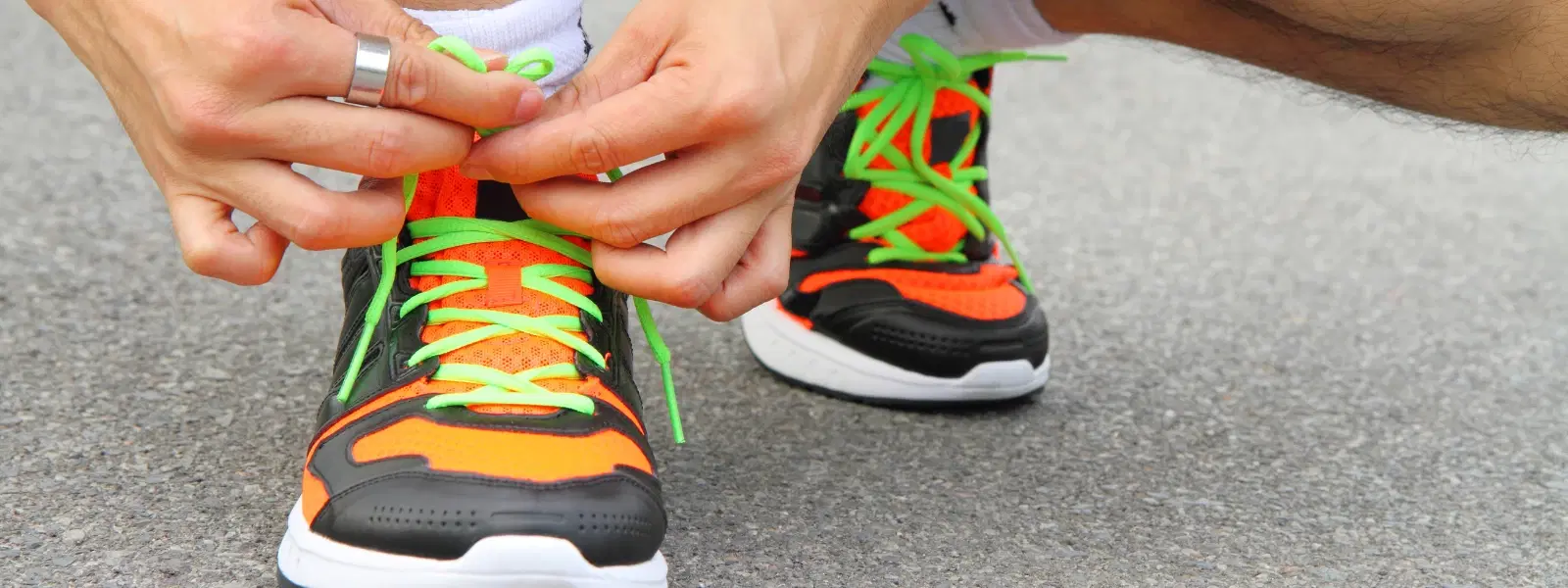
Footwear Guide
•04 min read

Running shoes play a vital role in every athlete’s routine, especially when it comes to indoor sports. Show off your unique style while keeping your indoor courts pristine. But how do you know if your pair is suitable for sports played on sensitive surfaces? This blog post offers a comprehensive checklist to help you assess whether your running shoes are non marking. You will learn to identify non marking soles, understand the features they offer, and explore options for the best shoes for indoor courts.
Non marking shoes are crafted with specially designed soles that do not leave scuff marks or streaks on indoor sports surfaces. They are a favorite among players in sports like badminton, squash, and basketball because they help maintain the pristine condition of indoor courts. The design of non marking athletic footwear focuses on using soft, nonabrasive materials, typically in the form of gum rubber, ensuring that the shoes are gentle on the indoor floors while providing excellent grip. Gum rubber is a type of natural rubber known for its flexibility and durability, making it ideal for indoor footwear.
Key characteristics of non marking shoes include:
- Soles made from soft, nonabrasive materials such as rubber.
- A flat or slightly textured sole surface that enhances grip without damaging floors.
- Lighter-colored or gum rubber soles that prevent visible staining on surfaces.
Understanding the difference between marking vs non marking shoes is crucial for making an informed choice. Marking shoes typically feature hard, dark soles which can leave visible marks on indoor surfaces. In contrast, non marking shoes for sports are designed with lighter, softer materials to avoid causing scuffs and streaks. Knowing this difference helps in selecting footwear that meets both performance and preservation needs for various indoor activities.
If you are shopping for shoes and wondering whether your pair qualifies as non marking, follow this step-by-step checklist:
- Inspect the sole color: Non marking soles are usually light-colored or made of gum rubber.
- Perform the paper test: Rub the sole on a white sheet of paper. If a mark appears, the shoe may not be non marking. The paper test is a simple industry-standard method to verify non marking features.
- Check the manufacturer labels: Look for explicit mentions of non marking features in the product description.
- Research online: Read reviews and product specifications that confirm if the shoe is non marking.

When picking non marking shoes for sports, you are looking for several key features that set them apart. These include enhanced grip on smooth surfaces, a lightweight build that supports movements in different directions, and overall durability for frequent indoor use. The design of these shoes not only benefits performance but also ensures that your indoor courts remain unmarred and in top condition.
There is a variety of non marking shoes that cater to different indoor sports. For instance, badminton shoes are known for their lightweight construction and lateral support. Basketball shoes might emphasize ankle stability with a high-top design, whereas squash shoes focus on providing superior grip and cushioning for quick movements in different directions. Each type is tailored to the specific demands of the sport, ensuring that every athlete finds footwear that supports their performance while protecting indoor surfaces. These footwear options complement a stylish and sustainable wardrobe, aligning with Tata Neu’s values of impact and innovation.
While running shoes are primarily designed for outdoor running, many models can be suitable for indoor use if they meet certain criteria. The best shoes for indoor courts should have non marking soles, provide adequate cushioning for hard indoor floors, and offer flexible designs that allow for movements in different directions. These qualities make them an ideal choice for casual play or workouts in indoor settings.
Choosing shoes with non marking soles comes with a range of benefits. One of the main advantages is that they preserve the quality of indoor courts by preventing scuff marks and damage to expensive flooring. Moreover, non marking soles offer enhanced safety by providing better traction and reducing the risk of slipping, thus ensuring that your performance is not hampered by unexpected falls. Finally, these shoes serve well in multiple indoor sports, making them a versatile choice in your footwear guide for indoor activities. They are also a responsible fashion choice, reflecting Tata Neu’s commitment to sustainability and innovation.
Insight Corner: Did You Know?
Non marking soles are not just limited to sports use—they are perfect for indoor fitness classes, dance studios, and even for casual wear in spaces with delicate flooring. This feature highlights the non marking sole benefits, providing both functionality and style.

When selecting non marking running shoes, it is essential to consider several factors to ensure you make the best choice for your sporting needs. First, evaluate sport-specific needs; choose a shoe that is tailored for your activity, whether it's the lateral support required for badminton or the ankle stability needed for indoor basketball. Second, consider fit and comfort because proper sizing significantly influences performance and reduces the risk of discomfort. Lastly, always check the product details and reviews to confirm the non marking features. Transitional phrases like "Additionally" or "Furthermore" can help guide your decision-making process.
It is important to note that even though many running shoes are designed primarily for outdoor use, those that meet the criteria of non marking athletic footwear can work well indoors. Paying close attention to the features of non marking shoes and comparing different types can help you identify the best shoes for indoor courts and other sports arenas.
Basketball shoes can be non marking if they have light-colored, soft rubber soles that do not leave marks on indoor surfaces. Think of them as your style-savvy companion for the court.
Perform a simple paper test by rubbing the sole of your shoe on a white sheet or tile; if no marks are left, the shoe is non marking. It’s a quick and easy way to check!
While running shoes may not offer the necessary lateral support for competitive badminton, non marking running shoes can be a viable option for casual indoor play. They’re a flexible choice for lighter activities.
Non marking soles help preserve indoor court surfaces, enhance grip, and ensure safety by reducing slips during sporting activities. Plus, they complement a sustainable and fashionable lifestyle.
In conclusion, non marking running shoes are a crucial element for athletes involved in indoor sports or activities on delicate surfaces. By following the checklist provided, you can confidently determine if your shoes meet the necessary standards and enjoy the benefits of enhanced safety, performance, and court preservation. This footwear guide for indoor activities encourages you to invest wisely in features that offer both functionality and style, ensuring that every step is a statement of your commitment to responsible and impactful fashion.